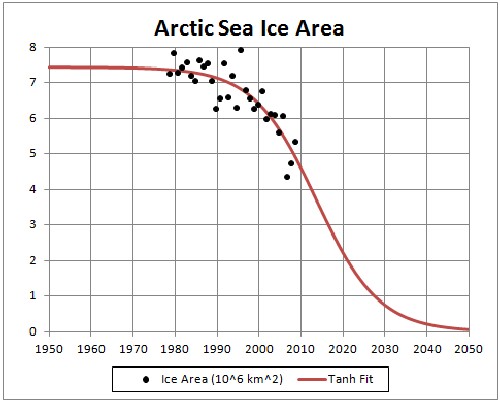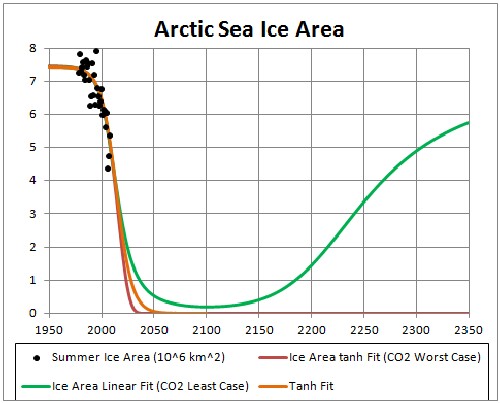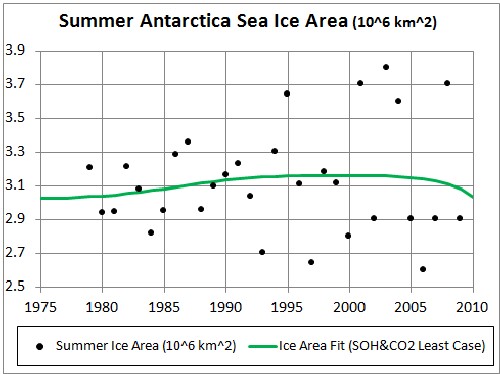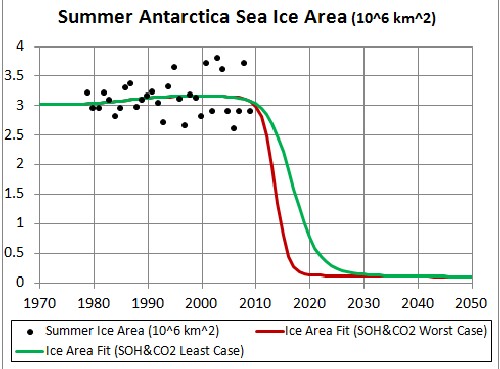

L. David Roper
http://arts.bev.net/RoperLDavid/
23 August, 2010
In three previous studies I projected Arctic-summer-sea-ice loss, Greenland-ice-mass loss, Antarctica-ice-mass loss and glaciers-ice-mass loss into future years.
Here I show the results for all for studies to try to get a better view of the global ice loss situation for future years..
 |
 |
It is possible that a northern ozone hole could develop in the future, which could decrease the fall in Arctic sea ice.
 |
 |
The northern-ozone-hole data are used to account for the approximate rise in Antarctic sea ice before if falls due to atmospheric carbon.
All fits shown below fit the data about equally well. |
This shows three of the fits. The red curve is a slightly better fit than the other five fits. |
This shows three more fits, including one for which all Greenland ice melts at about year 2040. |
|
This shows five fits about equally probable, including one for which all Greenland ice melts before year 2025, which is slightly the best fit. The shape of the curve for years before now is of no concern except to fit the rising data up from 2002 to 2007. It could be nice to have data before 2002 to include in the fit. |
The future projection for a 1-km-w.e. glaciers is shown in the following graph: The 1-km glacier disappears at about 2170. |
The future projection for a 100-m-w.e. glaciers is shown in the following graph: The 100-m glacier disappears at about 2120. |
The analysis summarized above indicate that before year 2100 most of the Earth's ice will disappear. That disappearance will lead to much sea-level rise.
If the Greenland ice sheet were to all melt, sea level would rise by about 7 meters or 23 feet. If the Antarctica ice sheet were to all melt, sea level would rise by about 60 meters or 200 feet.
Roper Global-Heating Web Pages
L. David Roper interdisciplinary studies